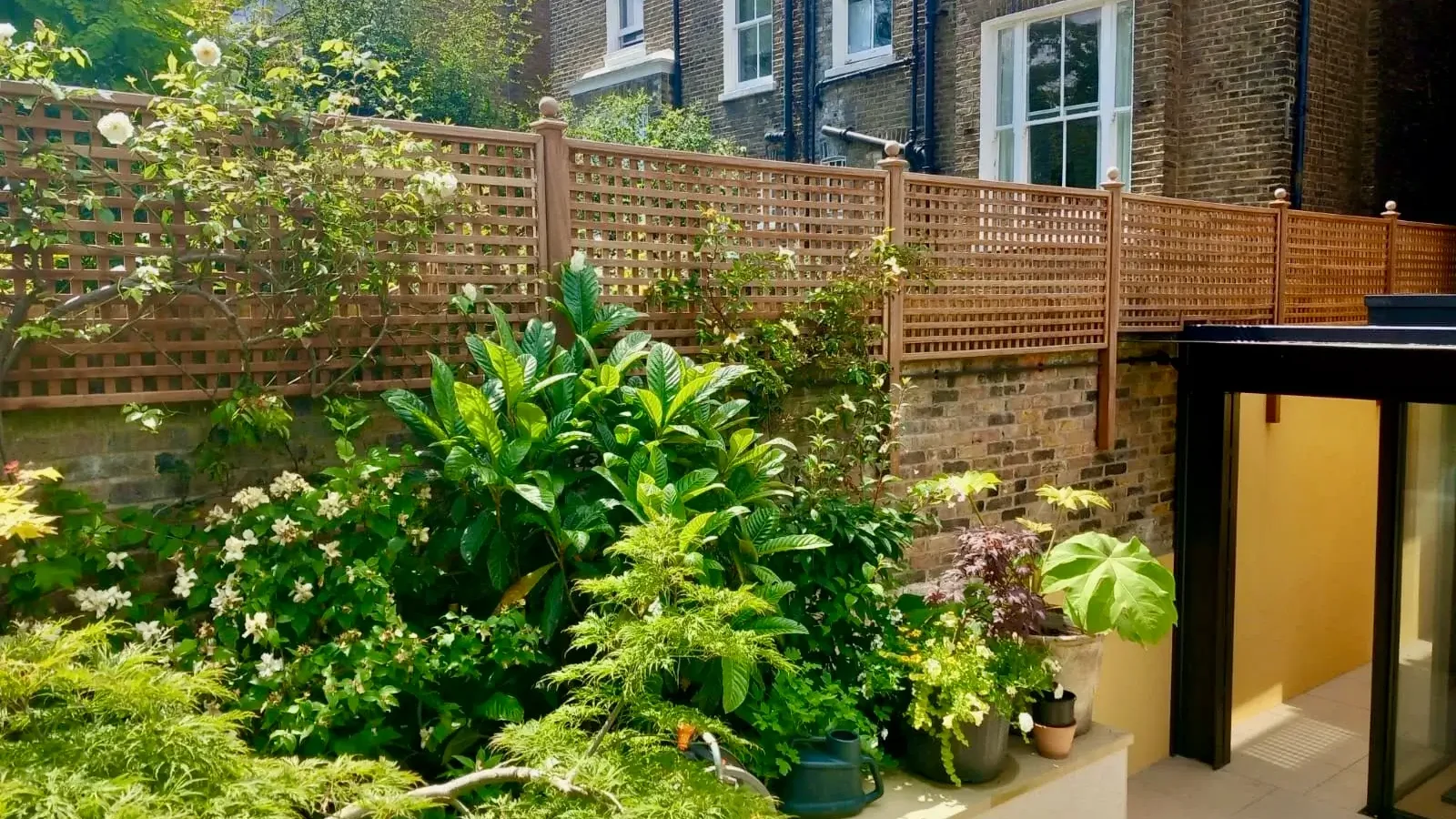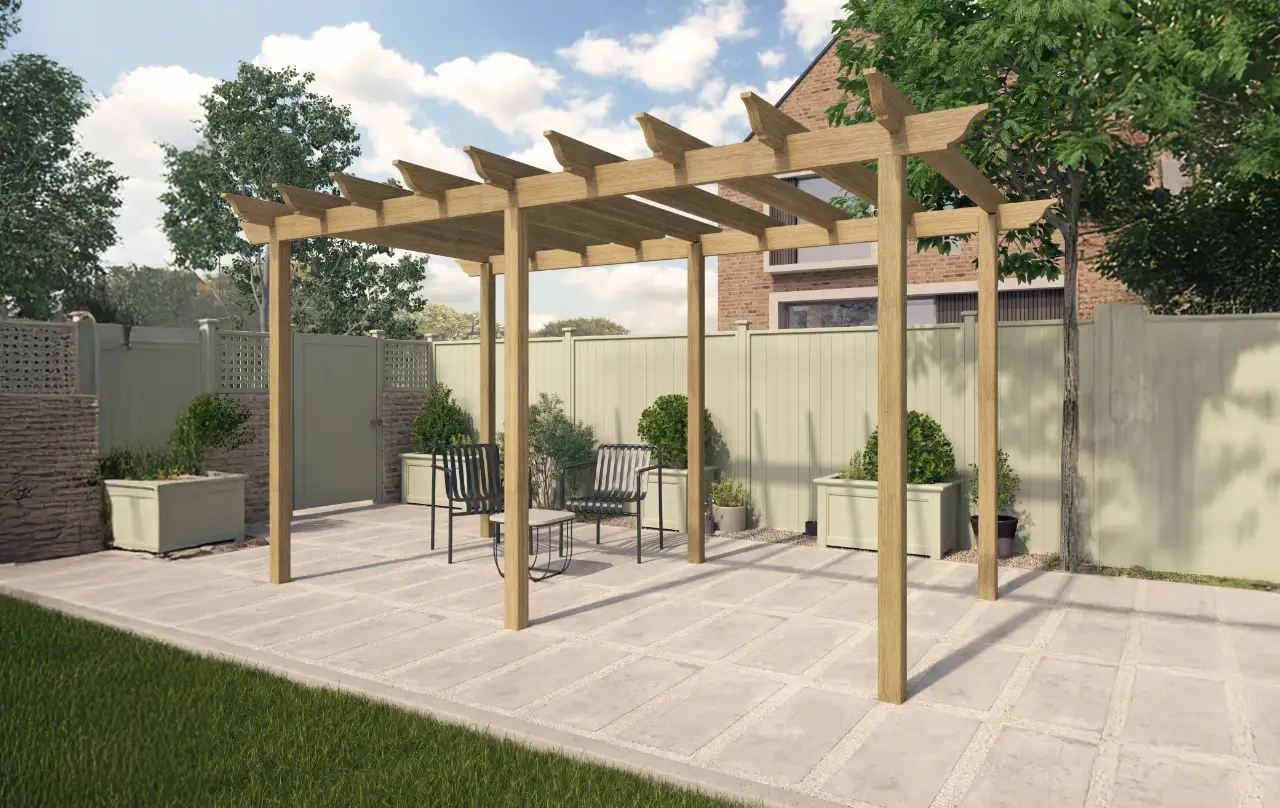Your basket is currently empty!
The Ideal Season to Plant Grapevines on Your Pergola

Welcome to the joyous world of grapevines and pergolas! If you’ve ever fantasised about stepping into your garden and plucking fresh grapes from overhead, then you’ve come to the right place. Planting grapevines on pergolas is not only a stunning aesthetic choice, but it’s also an investment in your outdoor living. And for those of us gardening in the United Kingdom, you’ll be pleased to know that our temperate climate is well-suited for this delightful venture.
In this comprehensive guide, we’ll walk you through the entire process, from choosing the right pergola and the best planting season to aftercare and maintenance. So, grab your gardening gloves and let’s get started!

Why Grapevines?
Grapevines aren’t just for vineyards and wineries. They’re a versatile plant that can elevate the look and feel of your garden in a way that few other plants can. But the benefits go beyond mere aesthetics:
- Visual Appeal: The cascading leaves and fruit offer an enchanting visual spectacle, changing throughout the seasons.
- Shade and Shelter: As the grapevines mature, they provide a natural canopy, giving you and your guests some much-appreciated shade during those hot summer days.
- Fruit Production: Yes, you can actually eat the grapes! Depending on the variety, you could be making your own jellies or even wine.
- Wildlife Attraction: The flowers and fruit can attract a variety of birds and beneficial insects to your garden, adding to its ecological richness.
- Easy to Train: Grapevines are relatively easy to train along structures, making them ideal for pergolas.
- Compatibility: Grapevines work well with a variety of pergola materials, from wood to metal, offering flexibility in garden design.
Given these benefits, it’s not surprising that grapevines on pergolas are gaining popularity, especially in UK gardens where the moderate climate allows for successful cultivation.
Understanding Pergolas
Before you even think about planting, it’s essential to understand the different types of pergolas and which are best suited for grapevines. A pergola serves as the backbone for your grapevines, offering the necessary support and structure. Here are a few key considerations:
- Material: While pergolas can be made from various materials like metal, vinyl, or composite, timber is a classic choice that complements the natural beauty of grapevines. Plus, timber offers the durability needed for long-term projects.
- Design: The design of the pergola can greatly influence how your grapevines grow and look. A simple, open-top design often works best, providing ample space for the vines to spread and flourish.
- Size: Think about the area you want to cover. Larger pergolas can accommodate more grapevines but consider the size relative to your garden’s overall space.
- Installation: If you’re not a DIY enthusiast, consider opting for a pre-assembled pergola or hiring professionals for the installation.
- Local Variations: Depending on your location in the UK, some pergola materials may be more suitable than others due to varying climatic conditions.
Explore our range of pergolas perfect for your grapevine project.
Selecting the right pergola is crucial, as it not only supports your grapevines but also contributes to the aesthetic and functional value of your garden.

The Ideal Planting Season
Timing is everything, especially when it comes to planting grapevines on your pergola. In the UK, the most favourable times for planting grapevines are:
- Late Autumn: After the grapevines have gone dormant, usually from late November to early December. The soil is still warm enough to encourage root growth, setting the stage for a healthy plant in the spring.
- Early Spring: Specifically, late March through April. The soil has started to warm up, and the risk of frost is minimal, making it ideal for planting.
Climate Considerations:
The UK’s temperate climate is generally conducive to grape growing, but it’s always good to consult local weather forecasts for any unexpected conditions.
Soil Conditions:
- pH Levels: Grapevines prefer slightly acidic to neutral soil, with a pH range of 6.0 to 7.0.
- Drainage: Ensure that the area where you plan to plant has good drainage. Grapevines do not like waterlogged soil.
Recommended Varieties for the UK:
- Solaris: Resistant to most forms of grape diseases and well-suited for the UK climate.
- Rondo: Offers a high yield and is particularly resistant to fungal diseases.
Choosing the right time and preparing the soil accordingly can make a significant difference in how well your grapevines grow and, eventually, produce fruit.

Preparing Your Pergola
So you’ve picked the perfect pergola and identified the best planting season. What’s next? Preparing your pergola for planting is a crucial step that can’t be skipped. Here’s how to go about it:
- Structural Integrity: Ensure that your pergola is stable and sturdy. Grapevines can become quite heavy as they grow, so a strong structure is essential.
- Spacing: Plan where each grapevine will go. A general rule of thumb is to space vines 6–8 feet apart to ensure they have enough room to grow.
- Height: Make sure your pergola is tall enough to allow the grapevines to grow freely while providing the coverage you desire.
- Horizontal Support: Install horizontal supports or wires where the vines can be trained to grow. This also helps in easy harvesting later on.
- Sunlight: Ensure that the location of your pergola receives at least 6–8 hours of sunlight per day. Grapevines need plenty of sun to thrive.
- Soil Preparation: Prepare the ground where the grapevines will be planted. This involves tilling the soil and adjusting its pH levels, as discussed in the previous section.
- Watering System: Consider installing a drip irrigation system for consistent and efficient watering.
Prestige Open Pergola – a luxurious and sturdy option for your grapevine project.
Preparing your pergola in advance ensures that once you plant your grapevines, they have the best environment to grow and flourish.
Planting Process
Planting grapevines is a rewarding experience, but it’s one that requires attention to detail. Here’s a step-by-step guide to get you started:
- Digging the Holes: For each grapevine, dig a hole about 12–18 inches deep and equally wide. Make sure it’s positioned accurately in relation to your pergola’s structure.
- Root Preparation: If your grapevines come with a root ball, gently tease the roots apart to encourage outward growth.
- Planting: Place the grapevine in the hole so that the root ball is level with the surrounding soil. Fill in the hole, tamping down the soil as you go to remove air pockets.
- Initial Watering: Water the grapevines generously right after planting to help settle the soil.
- Mulching: Apply a 2–3 inch layer of organic mulch around the base of each grapevine. This helps retain moisture and suppress weeds.
- Training the Vines: Attach the young vines to the horizontal supports or wires on your pergola. As they grow, continue to train them along these lines, pruning as necessary.
- Fertilisation: About a month after planting, apply a balanced fertiliser to encourage healthy growth. Follow the manufacturer’s instructions for application rates.
- Initial Pruning: It’s often recommended to trim back the grapevine to a single strong cane after planting. This encourages robust growth in the following seasons.
By following these steps carefully, you set the stage for your grapevines to grow strong and healthy, ensuring that your pergola will be a lush, fruitful sanctuary in the years to come.
Aftercare and Maintenance
Planting your grapevines is just the beginning. To ensure they grow healthy and bear fruit, ongoing care is essential. Here’s how to look after your grapevines:
- Watering: Grapevines are relatively drought-resistant once established but will need consistent watering during their first year. A drip irrigation system, if installed, will be particularly useful here.
- Pruning: Regular pruning is essential for grapevine health and productivity. The best time for this is late winter when the plant is dormant. Remove dead or overcrowded branches to allow for new growth.
- Fertilisation: After the first month, your grapevines shouldn’t require frequent fertilising. A slow-release fertiliser applied once in early spring should suffice.
- Pest and Disease Management: Keep an eye out for common pests like aphids and diseases such as powdery mildew. Use organic treatments when possible.
- Harvesting: Depending on the grape variety, your first harvest will usually be in the second or third year after planting. Harvest when the grapes are fully ripe for best flavour.
- No Treatments Needed: Unlike other materials, our timber pergolas don’t require any treatments, making them a hassle-free choice for your grapevine project.
Trellis-Backed Rectangular Planters – an excellent addition to your grapevine and pergola setup.
With these aftercare tips, your grapevines will be well on their way to providing a lush, fruitful canopy over your pergola for many seasons to come.

Other Options for Pergolas
While grapevines are an excellent choice for pergolas, they’re not the only option. There are numerous other plants that can add beauty and functionality to your garden:
- Wisteria: Known for its stunning purple blooms and strong, woody vines, wisteria is another popular choice for pergolas.
- Climbing Roses: For a romantic and fragrant pergola, consider planting climbing roses. They come in various colours and are relatively easy to train.
- Honeysuckle: This fragrant climber attracts pollinators and provides a lovely, sweet scent in the evenings.
- Jasmine: With its small, white flowers, jasmine adds both beauty and a delightful aroma to your outdoor space.
- Clematis: Available in many varieties, clematis vines offer colourful flowers and are easy to grow.
- Ivy: For a more evergreen option, ivy can create a lush, year-round cover. However, it can be invasive if not managed properly.
- Kiwi Vines: If you’re feeling adventurous, kiwi vines not only provide shade but also bear fruit, although they require a bit more care than grapevines.
Rose Arches and Arbours – another beautiful option for climbing plants.
It’s your garden, so feel free to get creative! The UK climate is versatile enough to support a wide range of climbing plants, making your choices both exciting and diverse.
Conclusion
Planting grapevines on a pergola offers a unique blend of beauty and functionality for your garden. From the aesthetic appeal to the practical benefits of shade and fruit production, this project is a rewarding investment for any UK gardener. With the right choice of pergola and planting season, followed by proper aftercare, your grapevine-covered pergola could become the centrepiece of your outdoor living space.
Whether you’re a seasoned gardener or a beginner, the steps and tips outlined in this guide should provide you with all the information you need to start your own grapevine-pergola project.
Explore our range of pergolas perfect for your grapevine project.









